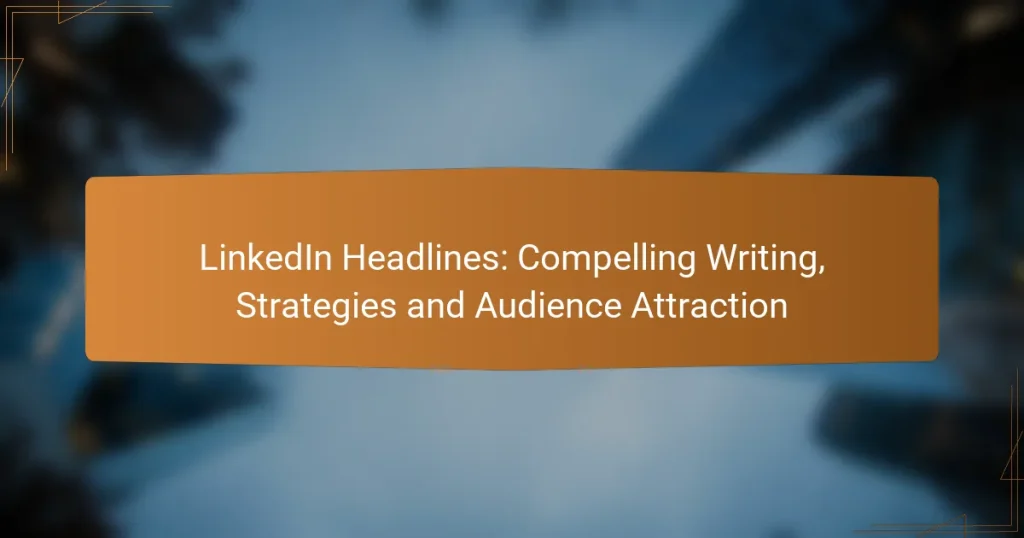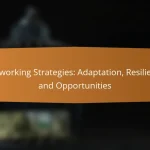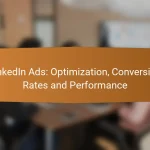Crafting a compelling LinkedIn headline is essential for making a strong first impression and attracting the right audience. By prioritizing clarity and relevance, you can effectively communicate your professional identity and value. Implementing targeted strategies, such as incorporating job titles and relevant hashtags, will enhance your visibility and foster meaningful connections.

How to write compelling LinkedIn headlines?
To write compelling LinkedIn headlines, focus on clarity, relevance, and engagement. A strong headline captures attention and clearly conveys your professional identity and value to potential connections or employers.
Use strong action verbs
Incorporating strong action verbs in your LinkedIn headline can significantly enhance its impact. Words like “driving,” “leading,” or “transforming” convey a sense of dynamism and authority.
For example, instead of saying “Marketing Specialist,” you might say “Driving Innovative Marketing Strategies.” This approach not only highlights your role but also suggests a proactive attitude.
Incorporate industry keywords
Using relevant industry keywords in your headline helps improve visibility in searches and connects you with the right audience. Identify terms that are commonly used in your field and integrate them naturally.
For instance, if you are in digital marketing, include keywords like “SEO,” “content strategy,” or “social media management.” This specificity can attract recruiters and professionals looking for your expertise.
Highlight unique value propositions
Your LinkedIn headline should reflect what sets you apart from others in your field. Clearly stating your unique value proposition can make your profile more appealing.
Consider what skills or experiences you have that are rare or particularly valuable. For example, “Data-Driven Marketing Strategist with 10+ Years in E-commerce” emphasizes both your expertise and your niche.
Keep it concise and clear
A concise and clear headline is essential for capturing attention quickly. Aim for around 120 characters to ensure your message is easily digestible.
Avoid jargon or overly complex phrases that may confuse readers. Instead, focus on straightforward language that communicates your professional identity effectively, such as “Project Manager | Agile & Lean Expert.” This clarity helps your audience understand your role at a glance.
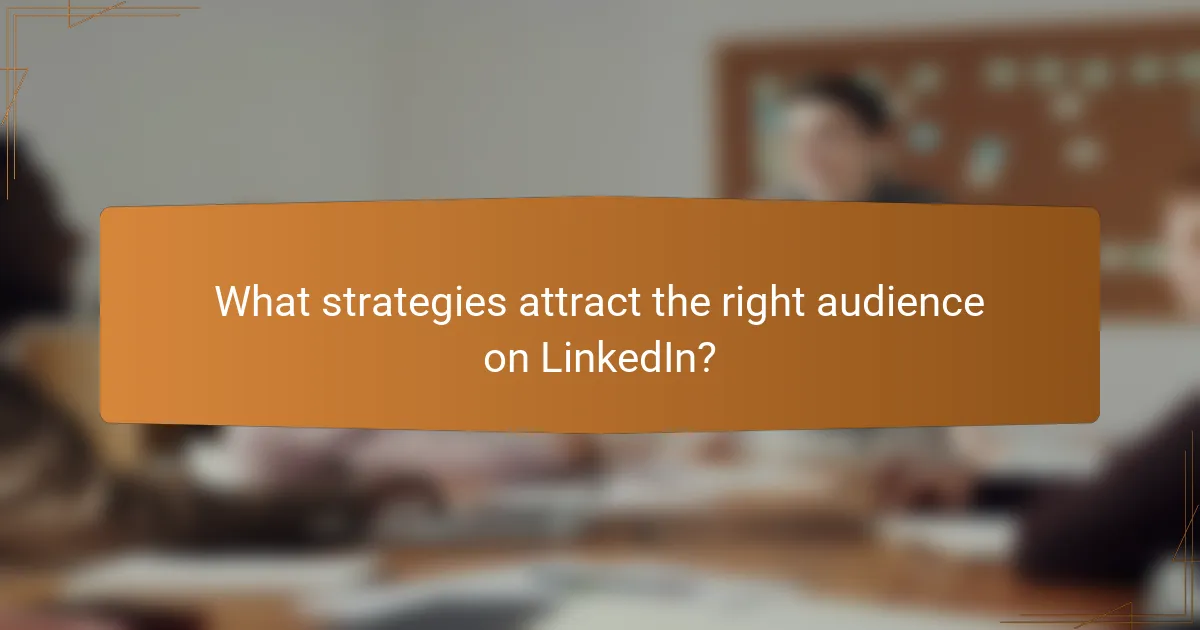
What strategies attract the right audience on LinkedIn?
Attracting the right audience on LinkedIn requires targeted strategies that resonate with specific professionals. By focusing on job titles, utilizing relevant hashtags, and actively engaging with your network, you can enhance your visibility and connect with the right individuals.
Target specific job titles
Identifying and targeting specific job titles is crucial for attracting the right audience. Tailor your LinkedIn headline and content to reflect the roles you want to engage with, such as “Marketing Manager” or “Software Engineer.” This approach helps in drawing the attention of professionals who hold these positions or are looking to connect with them.
Consider using variations of job titles to broaden your reach. For instance, instead of just “Sales Director,” you might include “Sales Executive” or “Business Development Manager.” This increases the chances of appearing in searches relevant to your desired audience.
Utilize relevant hashtags
Incorporating relevant hashtags in your posts and profile can significantly enhance your visibility on LinkedIn. Use hashtags that are popular within your industry or specific to the audience you want to attract, such as #DigitalMarketing or #DataScience. This practice helps your content appear in searches and feeds of users interested in those topics.
Aim for a mix of broad and niche hashtags. While broader hashtags can attract a larger audience, niche hashtags can connect you with more engaged users. A good rule of thumb is to use three to five hashtags per post to maintain clarity and focus.
Engage with your network
Active engagement with your network is essential for attracting the right audience on LinkedIn. Regularly comment on, like, and share posts from your connections to foster relationships and increase your visibility. This not only keeps you on their radar but also encourages reciprocal engagement.
Consider initiating conversations by asking questions or sharing insights related to your industry. This approach can position you as a thought leader and attract professionals who share similar interests. Remember to personalize your interactions to make them more meaningful and impactful.
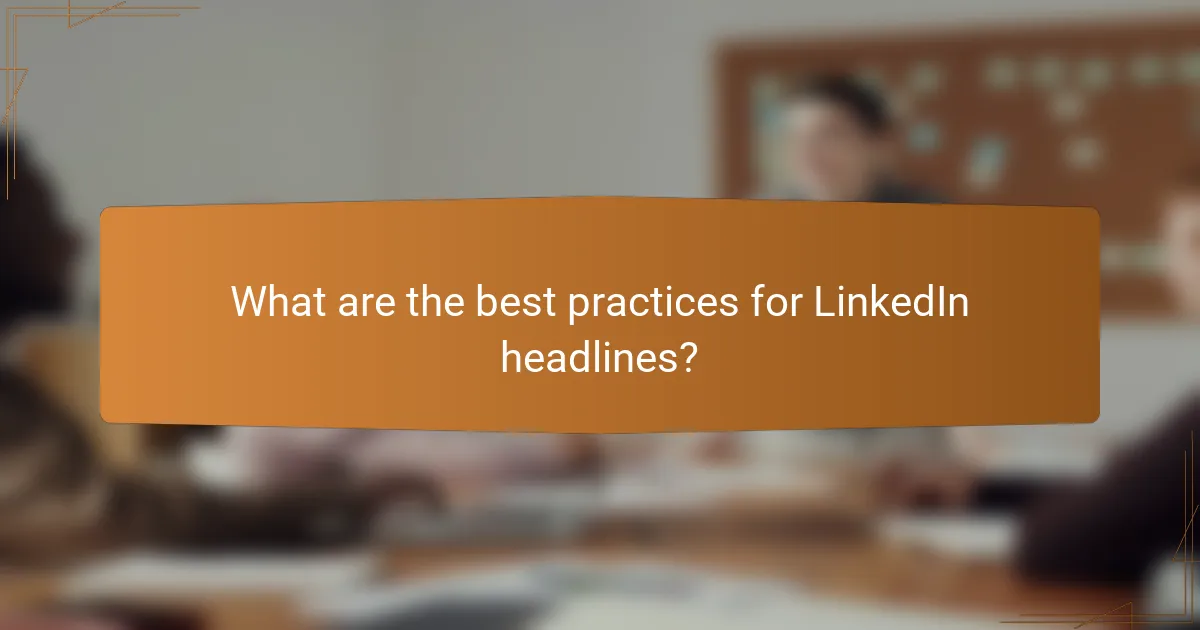
What are the best practices for LinkedIn headlines?
The best practices for LinkedIn headlines focus on clarity, personalization, and relevance. A compelling headline should reflect your professional identity while attracting the right audience.
Personalize your headline
Personalizing your LinkedIn headline means tailoring it to reflect your unique skills and professional goals. Use specific terms that resonate with your target audience, such as your job title, industry, or key skills.
For example, instead of a generic title like “Marketing Professional,” consider “Digital Marketing Strategist Specializing in SEO and Content Marketing.” This approach not only highlights your expertise but also makes you more discoverable.
Include measurable achievements
Incorporating measurable achievements into your headline can significantly enhance its impact. Quantifying your successes helps potential connections and employers understand your value at a glance.
For instance, stating “Increased Sales by 30% in One Year” or “Managed a Team of 10 to Deliver Projects on Time” provides concrete evidence of your capabilities. Aim to include one or two key metrics that showcase your strengths.
Update regularly for relevance
Regularly updating your LinkedIn headline ensures it remains relevant to your current career stage and goals. As you gain new skills or shift roles, reflect these changes in your headline to attract the right opportunities.
Consider revisiting your headline every few months or after completing significant projects. This practice keeps your profile fresh and aligned with your evolving professional narrative.
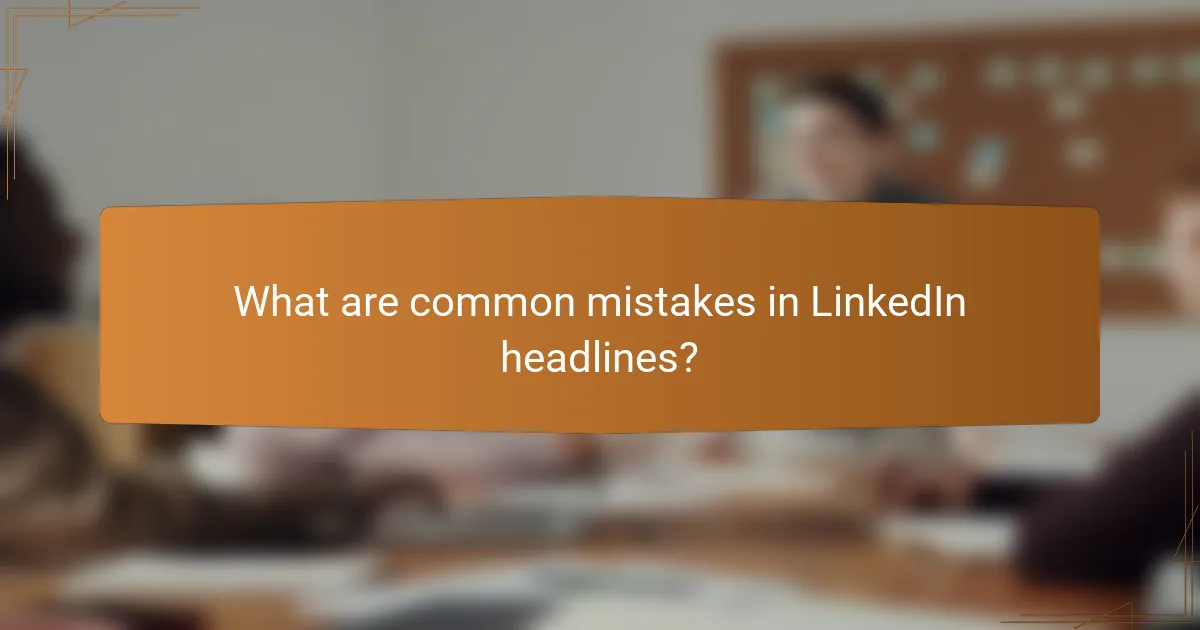
What are common mistakes in LinkedIn headlines?
Common mistakes in LinkedIn headlines include using jargon, being vague, and failing to showcase personality. These errors can hinder your ability to attract the right audience and make a strong impression.
Using jargon or buzzwords
Overusing jargon or buzzwords can make your LinkedIn headline sound insincere or overly complex. Terms like “synergy,” “thought leader,” or “disruptive” may impress some, but they can alienate others who prefer straightforward language.
Instead, focus on clear and concise language that accurately describes your skills and expertise. For example, instead of saying “innovative marketing strategist,” you might say “digital marketing expert specializing in social media campaigns.”
Being too vague or generic
A vague or generic headline fails to convey your unique value proposition. Phrases like “Experienced Professional” or “Results-Driven Leader” do not provide specific insights into what you actually do.
To improve clarity, include specific roles, skills, or achievements. For instance, “Sales Manager with a track record of exceeding targets by 30% annually” offers a clearer picture of your capabilities.
Neglecting to showcase personality
Headlines that lack personality can come across as robotic and uninviting. Your LinkedIn headline is an opportunity to reflect your professional identity and personal brand.
Incorporate elements that highlight your passions or unique approach. For example, “Creative Graphic Designer who loves turning ideas into visual stories” not only describes your role but also gives a glimpse of your enthusiasm and style.

How to analyze the effectiveness of LinkedIn headlines?
To analyze the effectiveness of LinkedIn headlines, focus on metrics such as profile views and connection requests. These indicators help gauge how well your headline attracts your target audience and encourages engagement.
Monitor profile views
Monitoring profile views is a straightforward way to assess the impact of your LinkedIn headline. A significant increase in views after updating your headline suggests that it resonates with your audience. Aim for a noticeable uptick within a few weeks of making changes.
Consider using LinkedIn’s analytics tools to track profile views over time. Look for patterns, such as spikes in views after specific posts or interactions, which may indicate that your headline is effectively drawing attention.
Track connection requests
Tracking connection requests provides insight into how well your headline is attracting potential connections. If you notice an increase in requests following a headline update, it likely means your new wording is appealing to your target demographic.
To make the most of this metric, compare the number of connection requests received before and after your headline change. A rise of even a few requests can signal that your headline is successfully engaging users. Aim for a consistent increase to validate the effectiveness of your headline strategy.
